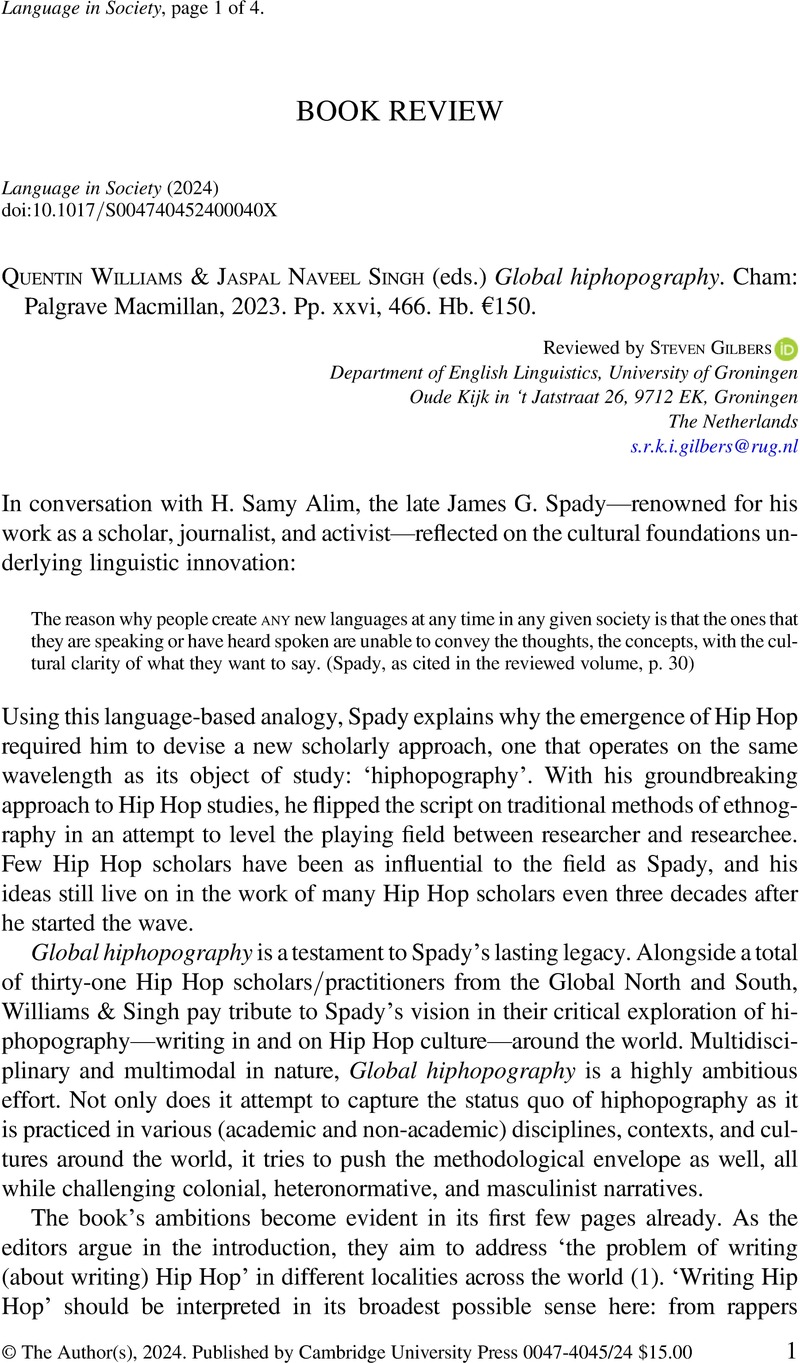No CrossRef data available.
Article contents
Quentin Williams & Jaspal Naveel Singh (eds.) Global hiphopography. Cham: Palgrave Macmillan, 2023. Pp. xxvi, 466. Hb. €150.
Review products
Quentin Williams & Jaspal Naveel Singh (eds.) Global hiphopography. Cham: Palgrave Macmillan, 2023. Pp. xxvi, 466. Hb. €150.
Published online by Cambridge University Press: 17 May 2024
Abstract
An abstract is not available for this content so a preview has been provided. Please use the Get access link above for information on how to access this content.

- Type
- Review
- Information
- Copyright
- Copyright © The Author(s), 2024. Published by Cambridge University Press
References
Abdali, Dastan (2023). Looking at rap as part of ‘the culture’: Towards a Hip-Hop methodology [Conference presentation]. European Hiphop Studies Network 6.0–2023 Meeting Brno, Masaryk University, Brno, Czech Republic. September 8, 2023.Google Scholar
Alim, H. Samy (2011). Global ill-literacies: Hip Hop cultures, youth identities, and the politics of literacy. Review of Research in Education 35:120–46.CrossRefGoogle Scholar
de Lacey, Alex (2023). Level up: Live performance and creative process in grime music. Abingdon: Routledge. Online: https://doi.org/10.4324/9781003295792.CrossRefGoogle Scholar



